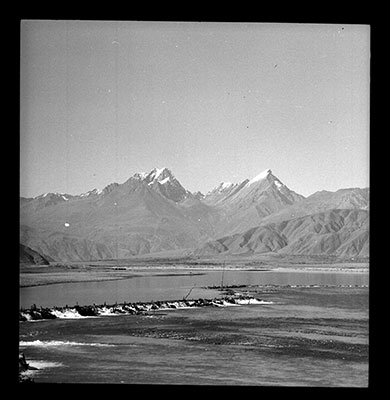
2001.59.2.99.1 (Film negative)


2001.59.2.99.1 (Film negative)

Hugh E. Richardson
Hugh Richardson
1949-50
Tsangpo Valley Region > Nyapso
2001.59.2.99.1
55 X 57 mm
Negative film nitrate
Donated August 2001
The executors of the estate of Hugh E. Richardson
Hugh E. Richardson
Manual Catalogues - Notes on front of negative album in Richardson's hand in white: '2' 'Ramagang, 'Ushang, Tshurphu rgyal, Misc pillars'. On the reverse of negative album written in blue ink on white labels in Richardson's hand: 'Hu zhang, Pa blon chen, Pha bong ka, Nyenchen thang lho, Rva sgreng, Khro 'brug, etc. etc.' [KC 10/3/2006]
In Negative - Notes on negative index - Folio 99. 'Below Nya bzo pass'
Other Information - Dates: This is one of a group of 25 images for which contact prints were made using the same printing out paper although with slighty different tonal qualities as some are very sepia toned. However, there is a very limited number of images in the collection printed out on this type of paper. One of the images in this group is from Samye and Richardson states that he photographed and copied this particular inscription pillar in 1949 [ A Corpus of Early Tibetan Inscriptions , Royal Asiatic Society: James G. Forlong Series, No. XXIX, p.26]. This suggests that the images may have been taken around that time [MS 17/12/2005]
For Citation use:
The Tibet Album.
"River Tsangpo and valley Below Nyapso La "
05 Dec. 2006. The Pitt Rivers Museum.
<http://tibet.prm.ox.ac.uk/photo_2001.59.2.99.1.html>.
For more information about photographic usage or to order prints, please visit the The Pitt Rivers Museum.
© The Pitt Rivers Museum